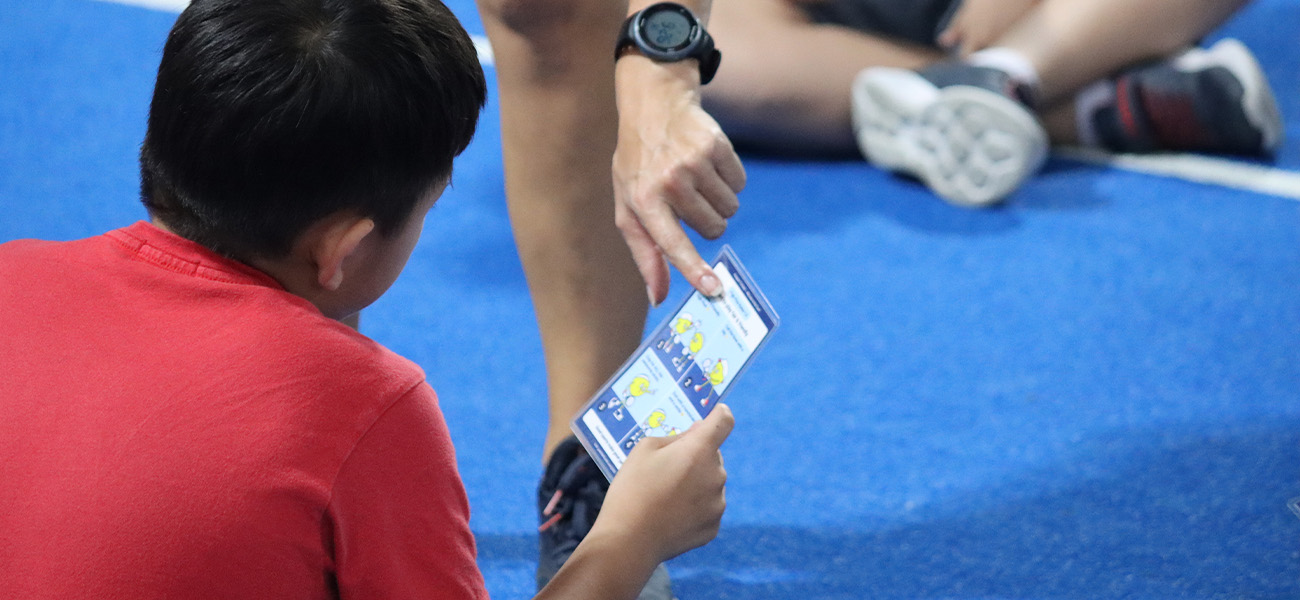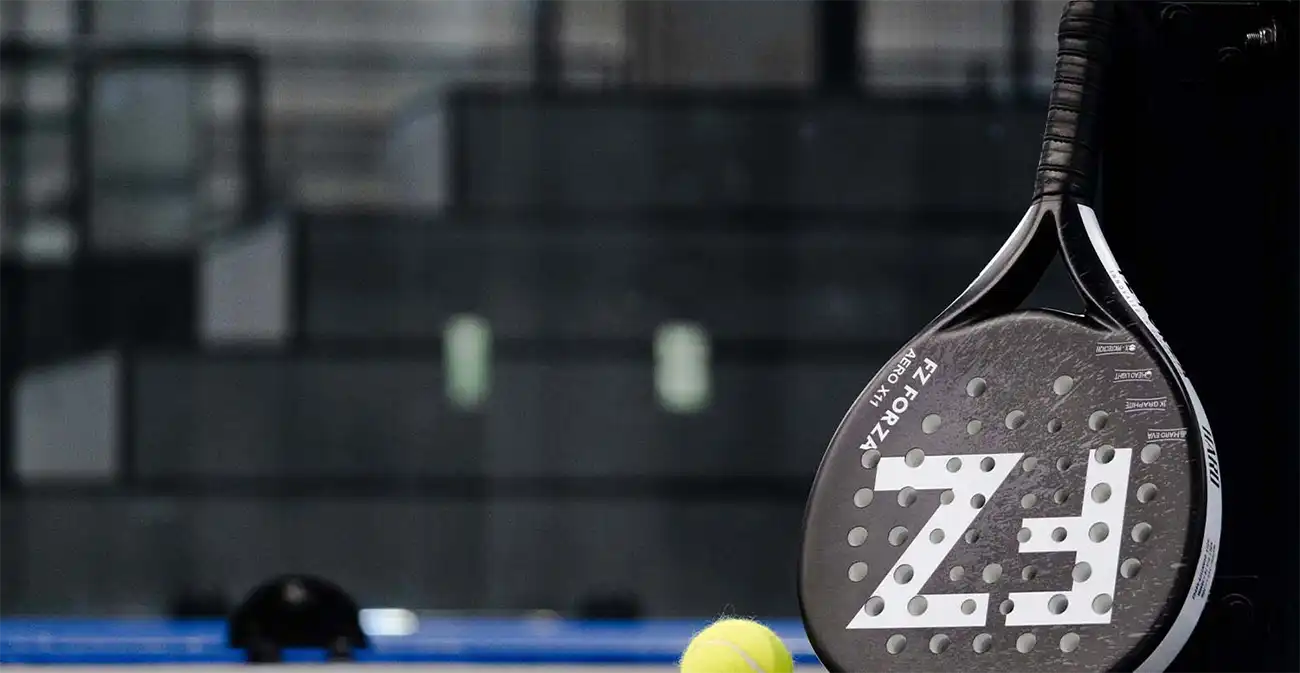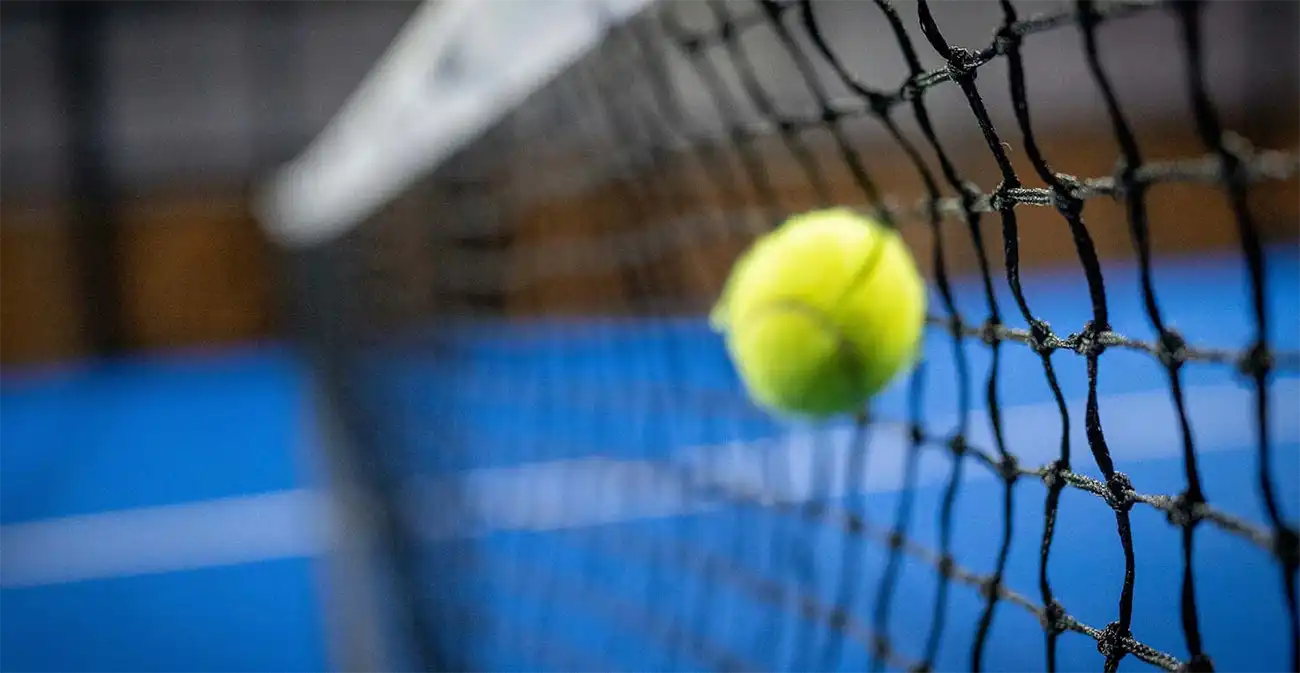Key takeaway
Compelling reasons why padel is such a good fit for children aged 5 to 12
1. One of the fastest growing racket sports
2. Fun sport for exercise and socialising
3. Easy sport for kids to pick up
4. New fun Padel Skill Cards to learn with
5. Passport to Padel Juniors for kids, coaches and parents to have fun while learning together
Padel has arrived at a court near you
Padel is one of the fastest-growing racket sports in the world. It’s fun, easy to start, and perfect if you want your child to stay active and learn something new. You’ll find that padel is a modern racket sport played in pairs, always as doubles. The court is enclosed with glass walls and is smaller than a tennis court, which makes the game feel quick, tight, and energetic. The ball can bounce off the walls, which keeps rallies going and adds a unique twist to how the game is played.
The serve is underhand, the rackets are solid and stringless, and the scoring is similar to tennis. But the experience is very different. Padel is fast-paced, social, and easy to pick up. That combination is drawing in players of all ages, and you’ll notice new courts appearing across Southeast Asia at a rapid pace.
Why padel suits children aged 5 to 12
The size of the court and the style of play make padel ideal for younger players. Because it’s always doubles, your child is never left to play alone, and they quickly learn how to work as part of a team. The smaller space means less running across long distances, and the walls keep the ball in play for longer, which helps build timing and confidence.
The rackets are lightweight and easy to handle. The basic moves can be learned quickly, and the rules are simple enough for your child to follow without feeling overwhelmed. All of this means they can enjoy the game from the start, without needing months of practice just to rally with others.
Padel Skill Cards
Passport to Padel Juniors
The Juniors edition was created to help your child learn padel in a way that feels natural, exciting, and easy to remember. Each card focuses on one key skill or a sequence of skills, such as movement, balance, or racket position. These are shown clearly on the front of the card using simple steps, colourful characters, and short phrases your child can understand. The aim is to give them a small, focused goal they can practise on court.
On the back of the card, you’ll find a game or activity that adds fun and incorporates a skill. These games are designed to be played in pairs or small groups and are easy to adapt depending on age or skill level. Coaches can use them during warm-ups, friendly challenges, or as part of a themed session. Even you, or an older sibling, can take part to make the learning more interactive and social.
The cards are more than just a learning tool. They’re also fun to collect. Each one features bright illustrations and themed characters, and new designs will be released in future sets. Keep an eye out for special editions and extras like matching T-shirts or caps featuring the cartoon characters from the cards. It’s all about making padel enjoyable from the very start.
Learning padel
Coaching, clubs and kid-friendly tools
Coaching programmes for junior players are already starting to appear across the ASEAN region. If you’re based in Malaysia, Indonesia, or Thailand, you’ll start to see more clubs offering padel lessons for kids, with growing interest from coaches, families, and children. Most programmes include beginner sessions that focus on movement, fun, and helping your child feel comfortable with the game.
To support this growth, tools like Passport to Padel Juniors by Padel Skill Cards have been created to help your child learn the basics in a fun, visual way. These cards cover important areas like safety, footwork, court awareness, and early technique. Each card has a theme, such as ninjas or space travel, and the instructions are easy to understand even for very young players.
You’ll find that coaches use the cards during lessons to explain concepts more clearly. They can also help your child practise with an older sibling or even with you. Some clubs include the cards in junior starter packs or offer them as part of a beginner’s set. It’s a flexible teaching aid that adds structure while keeping the game enjoyable and light.
Physical, mental and social benefits of padel for children
Like most good sports, padel offers far more than just fitness. It helps your child build balance, coordination, and quick reflexes. As they learn to move across the court, track the ball, and time their responses, they’re also developing body awareness and control.
There’s a strong social side to padel too. Because it’s always played in pairs, your child learns to communicate, make shared decisions, and develop team spirit. They’ll also practise supporting their partner, staying calm under pressure, and showing respect to opponents. These are lessons that often carry over into everyday life.
Mentally, padel encourages focus and resilience. Points are short, but rallies can be unpredictable. Your child will need to stay alert, react quickly, and keep going even after a missed shot. It’s a healthy mix of fun and challenge that helps kids stay engaged and positive.
How padel compares with other racket sports for kids
Padel, tennis, and badminton all involve rackets, courts, and quick reflexes, but they offer very different experiences, especially for children. This comparison looks at how the three sports differ in terms of equipment, court size, scoring, and how easy they are to learn. It’s a helpful guide if you’re deciding which sport might be the best fit for your child.
| Feature | Padel | Tennis |
|---|---|---|
| Court size | Small, glass‑walled | Full‑size, open |
| Format | All doubles | Singles & doubles |
| Ball speed | Slower, trackable | Fast, unpredictable |
| Serve | Underhand | Overhead |
| Racket | Solid, no strings | Strung, heavier |
| Rally length | Long (wall bounces) | Short (learners) |
| Scoring | Tennis system | Sets & games |
| Learning curve | Quick rallies | Steeper start |
| Teamwork | Built‑in pairs | Often solo |
| Fun for kids | High – bouncing walls | Medium – coach‑led |
Padel is sometimes called “padel tennis” to hint at the type of sport it is, although it’s not that closely related to tennis apart from being a racquet sport. The comparison table below gives you a clear overview of the differences between the three main racquet sports. Some people might also consider pickleball to be part of this group, and that will be covered in a future blog post.
Why now is the right time to get started
Padel is expanding quickly around the world, and especially so in Southeast Asia. But it’s still new enough that if your child starts now, they can grow with the sport. Clubs are forming, more coaches are becoming available, and events for junior players are starting to appear. The energy is building, and the opportunities will only continue to grow.
For you as a parent, it’s a chance to introduce a sport that’s easy to access, enjoyable to watch, and something you can even play alongside your child. For your child, it’s a chance to learn, move, and be part of something right from the beginning. With tools like Passport to Padel Juniors by Padel Skill Cards and growing support across the region, now is a great time to give it a try.
FAQs: Why playing padel is perfect for kids aged 5 to 12
Is playing padel safe for younger children?
Yes. The courts are enclosed, the rackets are light, and the game is non-contact. With proper supervision and warm-ups, it’s a safe, controlled environment.
What age is best to start padel?
Children as young as five can begin. Many clubs offer starter sessions aimed at the 5 to 7 age group.
Can kids practise padel away from lessons?
Yes, but they need a proper court. The game is designed for enclosed spaces, so it’s best played at a club or centre. With tools like Padel Skill Cards, children can repeat drills during spare time on court with a partner or parent.
What do they need to get started?
Comfortable sportswear, non-marking trainers, and a beginner’s racket are usually enough. Many clubs provide rackets and balls during trial sessions.
Do clubs accommodate kids?
Yes. Many padel clubs across Southeast Asia now offer beginner lessons for kids, junior coaching sessions, and family-friendly court time for children aged 5 to 12.
Discover more about Padel

Playing padel with kids: 5 easy to use starter tips

Best kids padel coaching and what to look for

10 ways you can recognise a great padel club